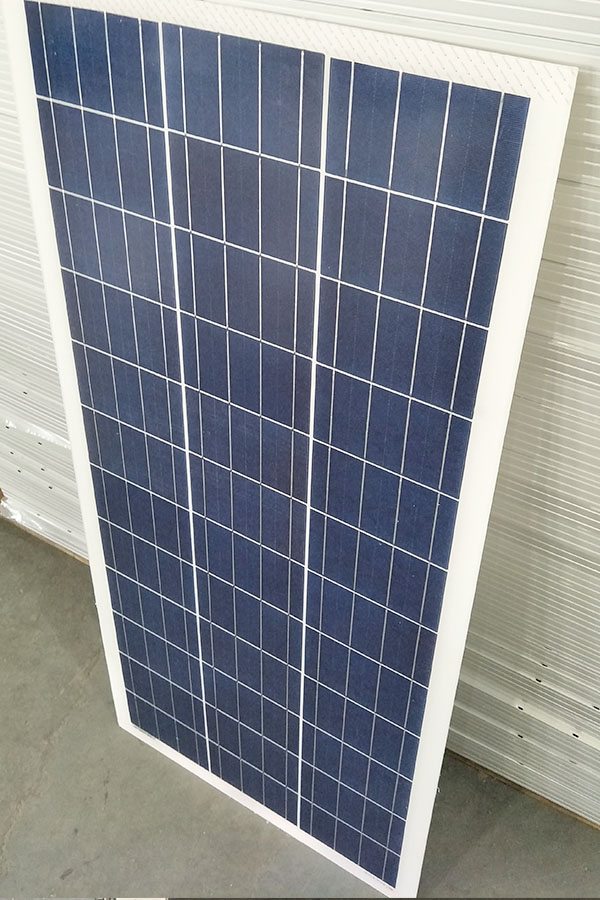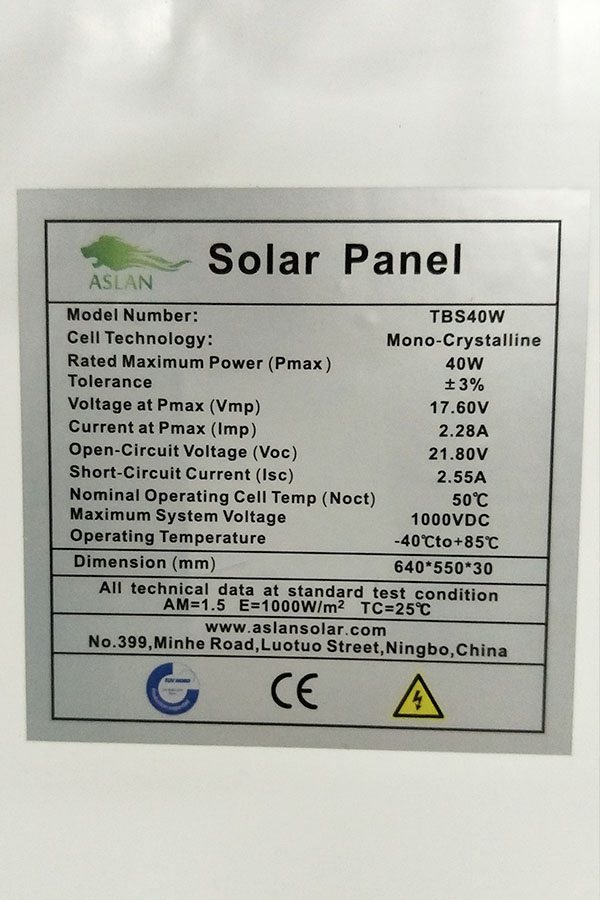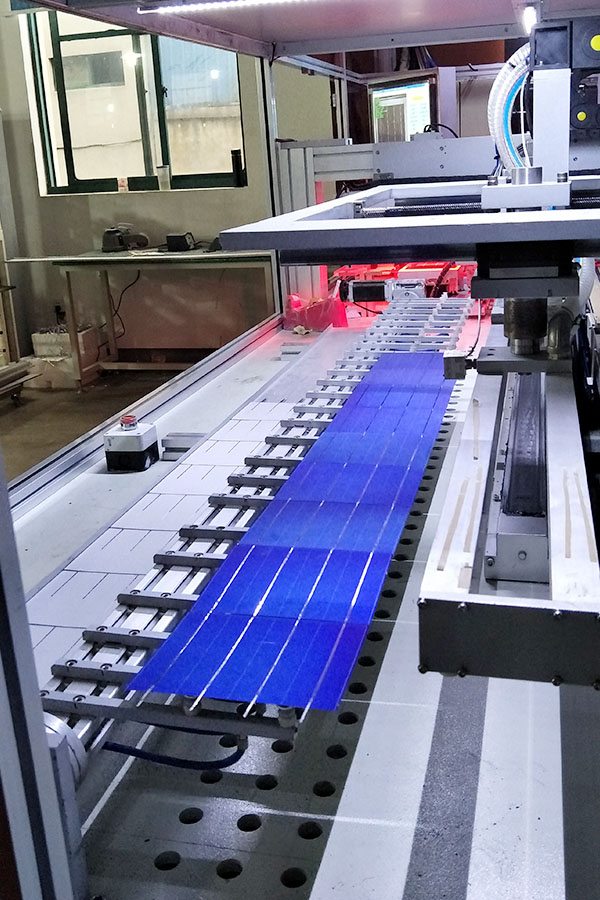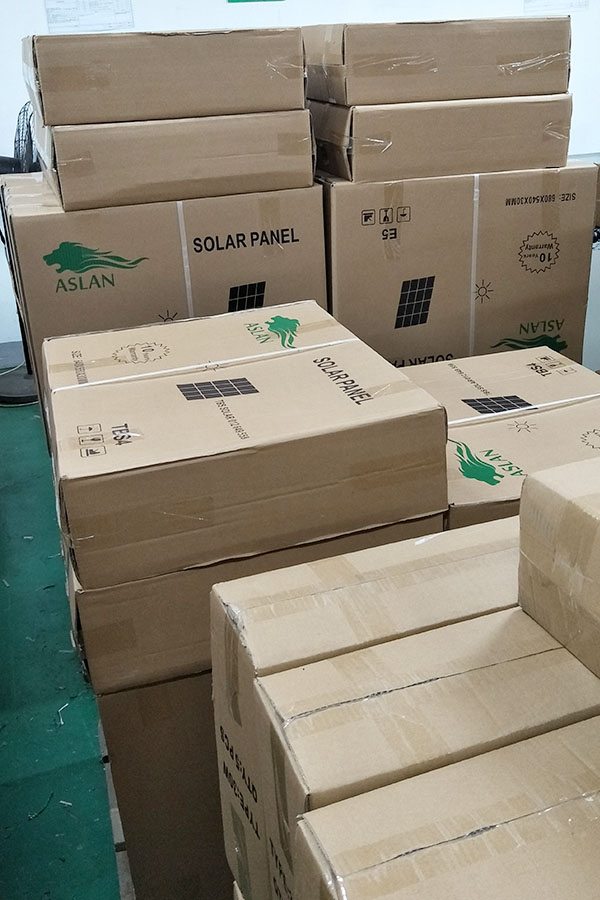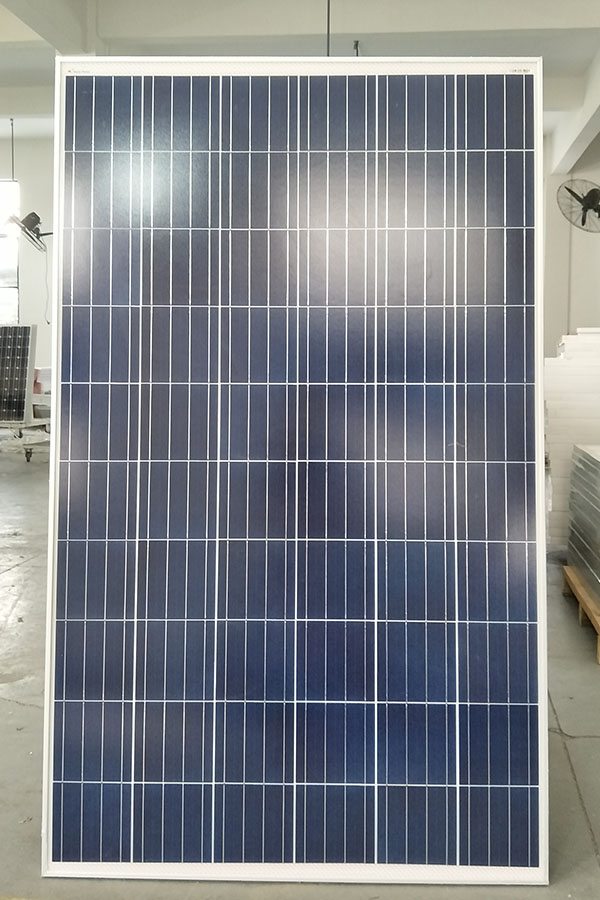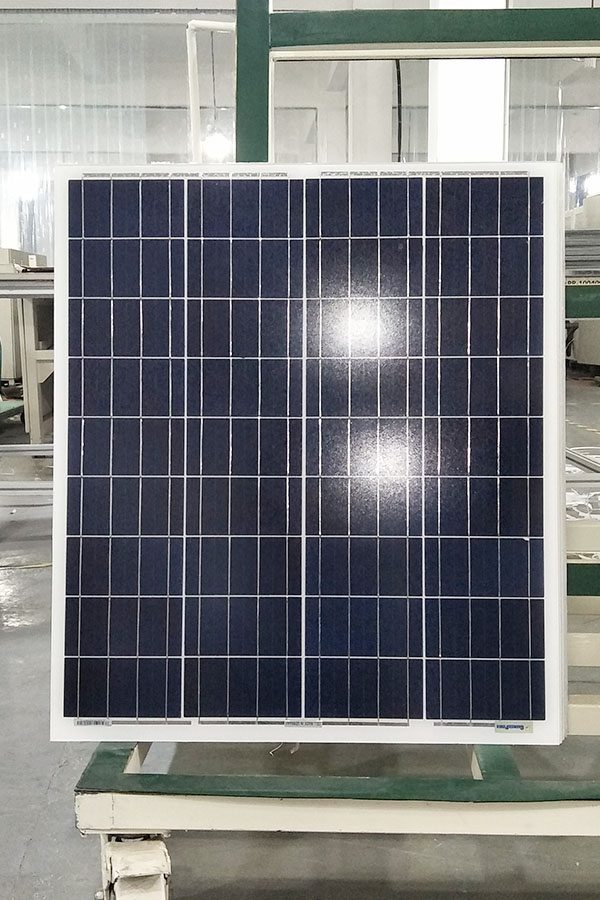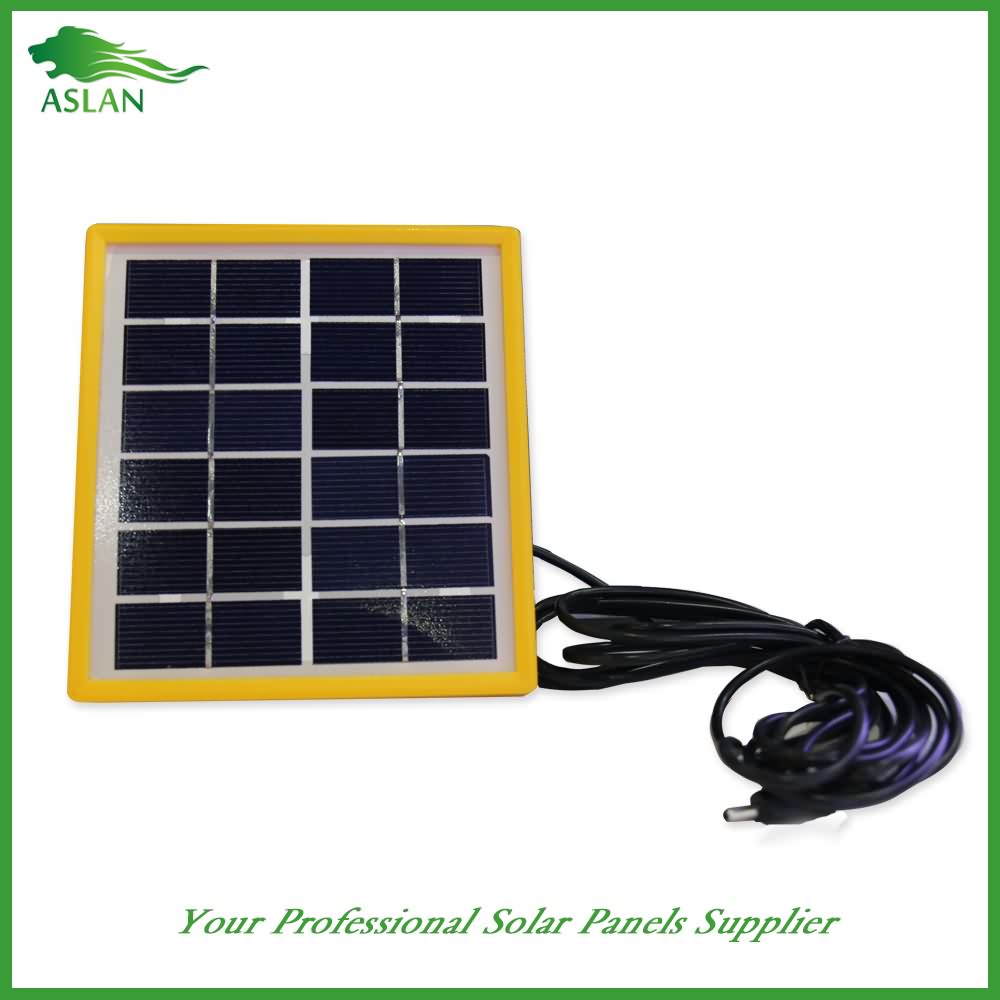16 Years Factory Poly-crystalline Solar Panel 80W Supply to Rwanda
Short Description:
To meet the customers' over-expected satisfaction , we have our strong team to provide our best overall service which includes marketing, sales, designing, production, quality controlling, packing, warehousing and logistics for 16 Years Factory Poly-crystalline Solar Panel 80W Supply to Rwanda, We welcome you to join us in this path of creating a prosperous and efficient business together.
Poly-crystalline Solar Panel 80W
Technical parameter
Maximum Power(W) 80W
Optimum Power Voltage(Vmp) 18.13V
Optimum Operating Current(Imp) 4.70A
Open Circuit Voltage(Voc) 21.79V
Short Circuit Current(Isc) 5.16A
Mechanical Characteristics
Cell Type Poly-crystalline 156x104mm (6 inch)
No of Cell 36 (4x9pcs)
Dimensions 1008x678x35mm
Weight 8.3KGS
Front Glass 3.2mm,High Transmission, Low Iron,Tempered Glass
Junction box IP65 Rated
Output Cable TUV 1×4.0mm2/UL12AWG,Length:900mm
Temperature and Coefficients
Operating Temperature(°C): -40°C ~ + 85°C
Maximum System Voltage: 600V(UL)/1000V(IEC) DC
Maximum Rated Current Series: 15A
Temperature Coefficients of Pmax: -0.435%
Temperature Coefficients of Voc: -0.35%
Temperature Coefficients of Isc: 0.043%
Nominal Operationg Cell Temperature (NOCT): 47+/-2°C
Materials of solar panel
1).Solar Cell——Poly-crystalline solar cell 156*104mm
2).Front Glass——-3.2mm, high transmission, low iron, tempered glass
3).EVA——-excellent anti-aging EVA
4).TPT——-TPT hot seal made of flame resistance
5).Frame——anodized aluminum profile
6).Junction Box——-IP65 rated, high quality, with diode protection
Superiority: high quality anodized aluminum frame, high efficiency long life, easy installation, strong wind resistance, strong hail resistance.
Features
1. High cell efficiency with quality silicon materials for long term output stability
2. Strictly quality control ensure the stability and reliability, totally 23 QC procedures
3. High transmittance low iron tempered glass with enhanced stiffness and impact resistance
4. Both Poly-crystalline and Mono-crystalline
5. Excellent performance in harsh weather
6. Outstanding electrical performance under high temperature and low irradiance
Quality assurance testing
Thermal cycling test
Thermal shock test
Thermal/Freezing and high humidity cycling test
Electrical isolation test
Hail impact test
Mechanical, wind and twist loading test
Salt mist test
Light and water-exposure test
Moist carbon dioxide/sulphur dioxide
OUTBACK FLEXMAX 60 vs. MIDNITE CLASSIC 200 – Performances.
THANKS FOR WATCHING MY VIDEOS.
PLEASE SUBSCRIBE GIVE US LIKE AND SHARE
Thanks for having me and Welcome to jwsolarusa.
I wanted to encourage you to check out my YouTube channel, Google+ where you can find a lot of information on Solar, Installation photos and Battery configurations on how to sized your battery bank, wire up your Solar System, Solar Panels and a whole bunch of stuff you can find for your application.
PLEASE FOLLOW ME ON THESE CHANNELS
Google+
https://plus.google.com/collection/kwKoHB
YouTube channel:
My Testing And Unboxing channel:
PIP2424LV-MSD – BY MPP SOLAR INC
Twitter:
@jwsolarusa
Instagram:
@jwsolarusa
GOD BLESS AND LET’S GO SOLAR!!
AP Television
Boston, Nov. 5, 2010
1. General shots Boston skyline
2. Various solar panels on roof of MIT library
3. Wide shot entrance to MIT Building 66
AP Television
Boston, Nov. 3, 2010
4. Zoom in sign for MIT Institute for Soldier Nanotechnologies
5. Michael Strano draws demonstration of solar funnel concept
6. Close shot Michael Strano drawing
7. SOUNDBITE (English) Michael Strano, Associate Professor of Chemical Engineering at MIT:
“So the solar funnel operates the same way you would think a regular funnel would work if you were to bring it outside in the rain. In fact, that’s a very good analogy. You know if you think of rain droplets like photons, you know, small packets of light, what the funnel actually does is it concentrates these photons down in space and concentrates them down to a small spot. And if you have a photovoltaic or a photo detector there, then you can greatly enhance the performance of this device.”
8. Pan right Postdoctoral associate Jae-Hee Han takes down bottle of carbon nanotubes
9. Close shot bottle of carbon nanotubes
10. Extreme close shot bottle of carbon nanotubes
11. Han drips carbon nanotube solution into container
12. Han prepares filament to dip into carbon nanotubes
13. Close shot filament, Han applies current
14. Machine dips filament into carbon nanotube solution
15. Han walking into lab
16. SOUNDBITE (English) Jae-Hee Han, Postdoctoral Associate, Strano Research Group:
“By using this laser we can see the fluorescence coming from this fibre.”
17. Close shot microscope
18. Extreme close shot fibre under microscope
19. Geraldine Paulus walking through lab
20. SOUNDBITE (English) Geraldine Paulus, graduate student, Strano Research Group:
“The sunlight excites the nanotubes that are in the outer layer of the fibre, and because of the different properties that make up the nanotubes in the different layers, the light is being funnelled to the core of our construction, of the fibre. That’s where it is emitted at a wavelength that is specific to the nanotubes in the core of the fibre. So basically we’ve spatially and energetically focused the light.”
21. Group shot Paulus and Han
22. SOUNDBITE (English) Geraldine Paulus, graduate student, Strano
Research Group:
“So once we noted that the fibre fluoresced and that it gave light as you see here on this image, we analysed the wavelengths of this light and the intensities with the computer and compiled all the data in the plot that you see here.”
23. Close shot computer screen with data plot
24. SOUNDBITE (English) Geraldine Paulus, graduate student, Strano Research Group:
“When the light travels, when the energy travels from one type of nanotube to the other type of nanotube, it loses a bit of its energy.
This bit of energy is determined by the difference in bandgap between the two types of nanotubes. If you choose two types of nanotubes which have a bandgap that is pretty much the same but one is a little lower than the other, then the energy lost in the transition will be mimimalised. So we could improve our invention by choosing two types of nanotubes that are more closely related, propertywise.”
25. Various setups Michael Strano at desk
26. SOUNDBITE (English) Michael Strano, Associate Professor of Chemical Engineering at MIT:
“Instead of having the entire roof be covered with say a brittle piece of silicon photovoltaic, you could then start to think about having a much smaller array of devices maybe embedded into plastic and then using a solar concentrator to make up for the decrease in area that you’ll find. So this tool can help engineers to make more robust photovoltaic technology.”
27. Close shot solar battery charger
28. Extreme close shot solar battery charger
AP Television
Boston, Nov. 5, 2010
You can license this story through AP Archive: http://www.aparchive.com/metadata/youtube/a9437d824c536eb9875f8a557c794bd5
Find out more about AP Archive: http://www.aparchive.com/HowWeWork
